Japan is a country full of culture and seasonal traditions. National holidays in Japanese culture shape daily life and offer insight into the nation’s values. Whether you’re visiting or living in Japan, this guide covers the essentials of how these holidays are observed.
What Are National Holidays in Japan?
In Japan, national holidays are called 祝日 (shukujitsu), and they represent official days of rest recognized by the government. These occasions highlight historical milestones, seasonal transitions, and the spirit of national unity. Unlike weekends, each holiday carries symbolic meaning rooted in the country’s traditions, beliefs, and social values.
Every 祝日 reflects a distinct theme such as honoring the constitution, celebrating Coming of Age Day, or appreciating nature’s beauty. People use these moments not only for leisure but also for family bonding, cultural reflection, and community participation. Local areas often host festivals, shrine visits, and civic gatherings that strengthen social ties.
These holidays also shape everyday life. Schools, offices, and public institutions close, while popular travel spots welcome more visitors. From quiet villages to bustling cities, the pace of life shifts in harmony with the holiday calendar. Both residents and travelers gain a deeper understanding of Japan by experiencing the cultural rhythm created by shukujitsu.
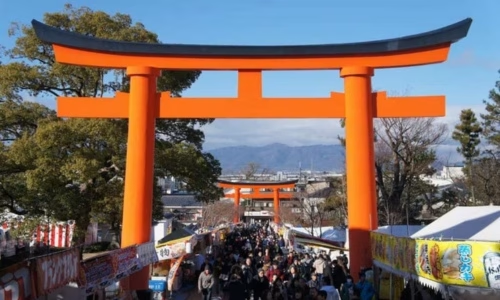
Month-by-Month List of Japanese Public Holidays
Japan has 16 official public holidays spread throughout the year. Here’s a breakdown of the most notable ones by month:
January
Celebrating the arrival of a new year is a cherished event throughout Japan. Known as Ganjitsu, this day marks the beginning of the calendar year and is widely celebrated across the country. Families gather to enjoy special meals like osechi ryori, visit shrines for hatsumode (the first shrine visit of the year), and exchange traditional greetings such as “Akemashite omedetou gozaimasu” (Happy New Year).
Shops, banks, and public offices are typically closed for several days around January 1st, as many people take extended time off. Streets and homes are decorated with symbolic ornaments like kadomatsu (pine decorations) and shimenawa (sacred ropes), which are believed to invite good fortune.
The New Year period is also a time of reflection and hope, as people write resolutions, send nengajo (New Year postcards), and enjoy quiet moments with loved ones.
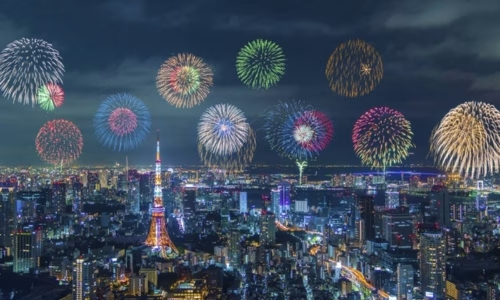
February
February features two national holidays that highlight Japan’s cultural roots and imperial heritage. While quieter than other festive months, these observances invite people to reflect on the nation’s founding and honor the current emperor.
Kenkoku Kinen no Hi, observed on February 11, honors the nation’s origins.
National Foundation Day, known as Kenkoku Kinen no Hi, takes place every year on February 11. The holiday marks the legendary accession of Emperor Jimmu, who, according to tradition, became Japan’s first emperor in 660 BCE.
Unlike other celebrations with parades or fireworks, this day carries a more reflective atmosphere. It highlights the origins of Japan and the enduring history of the Imperial family, recognized as the world’s oldest continuous monarchy.
On this occasion, families raise the national flag (日の丸 – Hinomaru) at home, and local communities host small gatherings. Many shrines also hold rituals to pray for peace and national prosperity. Although the events remain modest, the holiday strengthens feelings of patriotism, unity, and respect for Japan’s cultural heritage.
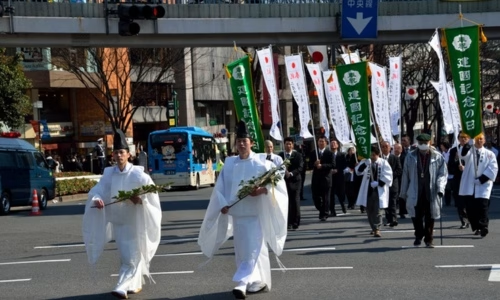
Tennō Tanjōbi, the Emperor’s Birthday, is celebrated on February 23.
The Emperor’s Birthday, called Tennō Tanjōbi, takes place on February 23 to honor Emperor Naruhito, who began his reign in 2019. The day stands as an official holiday and holds deep cultural meaning.
Only on this date do citizens step inside the Imperial Palace grounds in Tokyo. People wave the Japanese flag, and the Emperor together with his family greets everyone from the balcony during the event known as ippan sanga.
Many Japanese enjoy a calm holiday, while others travel to Tokyo to witness the ceremonies. The celebration allows both residents and visitors to feel a direct connection with the Imperial household. Marked by tradition and dignity, the day reflects national respect for the monarchy and its long history.
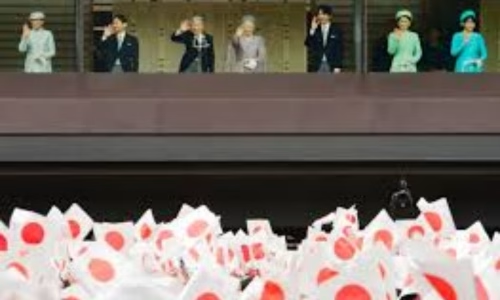
March
Shunbun no Hi, or Vernal Equinox Day, is a national holiday that marks the official arrival of spring in Japan. Taking place around March 20 each year, this day represents the moment when daylight and nighttime are nearly equal in length, a seasonal turning point celebrated across many cultures, including Japan.
The holiday is rooted in both nature appreciation and ancestral respect. Many people take time to visit family graves, clean burial sites, and offer flowers or incense, especially during the Higan period, which spans a few days before and after the equinox. At the same time, it’s a chance to enjoy the changing scenery as cherry blossoms begin to bloom and temperatures start to rise.
Rather than large public events, the day is observed in quiet, personal ways. It encourages mindfulness, balance, and a renewed connection with both nature and family traditions, core values deeply embedded in Japanese culture.
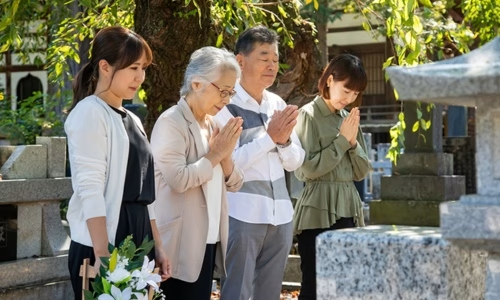
April
Shōwa Day, observed on April 29, marks the birthday of Emperor Shōwa (Hirohito), who reigned from 1926 to 1989. It is the first holiday in Golden Week, a cluster of public holidays that signals one of Japan’s busiest travel seasons.
Rather than focusing solely on celebration, Shōwa Day encourages the public to reflect on the events and challenges of the Shōwa Era, a period that spanned wartime hardship, post-war reconstruction, and Japan’s economic growth. The day invites thoughtful consideration of how the past has shaped the nation’s current society.
Many people take this opportunity to visit museums, historical exhibitions, or simply spend time in nature, a reflection of the Emperor’s well-known interest in biology and environmental studies. It’s also the beginning of a series of holidays when locals and tourists alike start planning getaways or family outings. Shōwa Day sets a reflective tone for the vibrant days of Golden Week that follow.
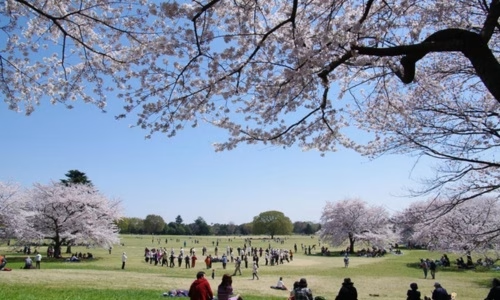
May
The month of May begins with three consecutive national holidays, forming the heart of Golden Week, a time when many Japanese take extended vacations, travel domestically, or spend quality time with loved ones. Each day carries its own meaning, from honoring Japan’s democratic foundation to celebrating the environment and the next generation.
Japan observes Kenpō Kinenbi on May 3 to honor the 1947 Constitution.
Held on May 3, Kenpō Kinenbi commemorates the enactment of Japan’s post-war constitution in 1947. The holiday is a time for citizens to reflect on the values of peace, democracy, and human rights that define modern Japanese society. Public lectures, news features, and educational programs often explore constitutional topics and civic responsibility.
While not marked by festivals, it’s a thoughtful day within Golden Week that encourages awareness of Japan’s political journey and commitment to peace.
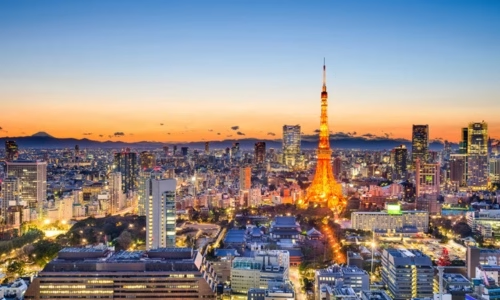
Midori no Hi on May 4 honors nature and the environment.
Midori no Hi, or Greenery Day, is dedicated to the appreciation of nature. Originally tied to Emperor Shōwa, who had a deep love for plants and biology, the holiday now stands as a national reminder to value and protect the environment.
On this day, many parks and botanical gardens offer free entry, and people across Japan head outdoors to enjoy the fresh spring air. Whether it’s a family picnic under blooming trees or a quiet walk through the woods, Greenery Day invites everyone to connect with the natural world.
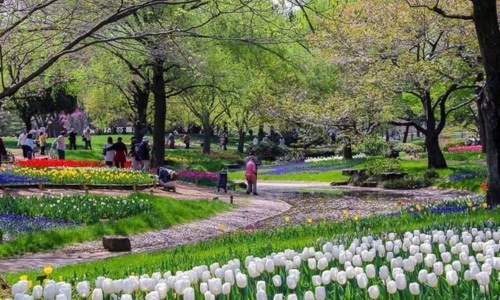
Kodomo no Hi (May 5) honors children’s growth and well-being.
Children’s Day celebrates the health, happiness, and growth of children, especially boys, as Hinamatsuri in March is more focused on girls. On this day, families fly koinobori (carp streamers), symbolizing strength and perseverance, and display samurai dolls or kabuto helmets to wish for courage and success.
Special treats like kashiwa mochi (rice cakes wrapped in oak leaves) are enjoyed, and homes are decorated to honor children’s futures. It’s a joyful day filled with tradition, color, and parental hope.
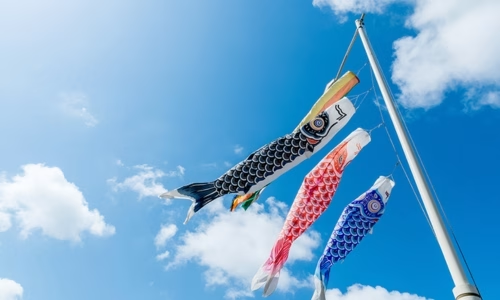
July
Marine Day, or Umi no Hi, is celebrated on the third Monday of July. This national holiday recognizes Japan’s close relationship with the sea and gives thanks for the ocean’s bounty, as well as the maritime industries that support the nation’s economy.
As an island country surrounded by water, Japan’s history, culture, and daily life are deeply tied to the ocean. Marine Day encourages people to reflect on the importance of the sea in transportation, food, culture, and environmental balance.
Many coastal cities hold festivals, beach clean-up events, and maritime-themed exhibitions. Families often take advantage of the long weekend to visit the seaside, go swimming, or enjoy fireworks displays near the shore. It’s also a popular time to kick off summer vacations, especially for students and office workers.
Umi no Hi blends appreciation for nature with recreation, reminding everyone of the value of preserving Japan’s beautiful marine environments.
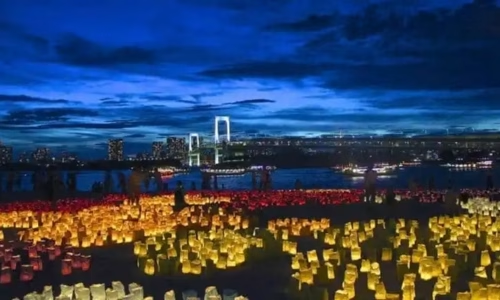
August
August in Japan brings a mix of official observance and cultural tradition. While there is only one national holiday, Mountain Day, the widely celebrated Obon Festival also takes place in the middle of the month, creating a meaningful period of reflection, nature appreciation, and family gatherings.
Yama no Hi (August 11) celebrates Japan’s mountains and nature.
Introduced in 2016, Yama no Hi is one of Japan’s newer public holidays. Its purpose is simple yet profound: to give people a chance to connect with and appreciate the country’s many mountains, forests, and natural landscapes.
Given Japan’s mountainous terrain, outdoor activities are a cherished part of life. On this day, many families go hiking, visit scenic trails, or participate in environmental events. National parks often host guided walks and eco-education programs, and local communities might organize mountain festivals or outdoor picnics.
The holiday promotes mindfulness toward nature and encourages both residents and tourists to enjoy Japan’s breathtaking highlands.
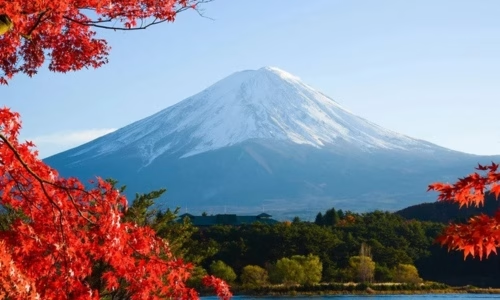
Obon (お盆) – Mid-August (Not an official public holiday)
Though not a formal national holiday, Obon is one of Japan’s most significant traditional observances. Typically held from August 13 to 16, Obon is a time when families return to their hometowns to pay respects to deceased relatives.
People visit cemeteries, clean ancestral graves, and participate in Bon Odori (folk dance festivals). Lanterns may be floated on rivers or the sea to guide ancestral spirits back to the afterlife.
Because of its cultural importance, many companies offer time off during Obon, and travel activity surges as millions move across the country. Even without official status, Obon plays a central role in summer life in Japan.
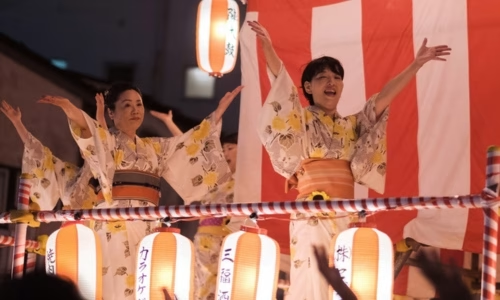
September
September brings thoughtful and meaningful observances in Japan. This month’s national holidays focus on showing gratitude to older generations and recognizing the balance of nature, offering a calm and reflective tone as summer fades into autumn.
Keirō no Hi, held in September, celebrates and respects the elderly.
Keirō no Hi, or Respect for the Aged Day, is a time for acknowledging the contributions and wisdom of Japan’s senior citizens. Celebrated on the third Monday of September, this national holiday encourages families and communities to express appreciation for the elderly.
Local governments often organize ceremonies, community lunches, or entertainment events for older residents. Children may visit their grandparents, send greeting cards, or offer small gifts. Media outlets also highlight stories of centenarians or individuals who have made lasting social contributions.
As Japan has one of the world’s oldest populations, this day plays a vital role in promoting intergenerational respect and awareness.
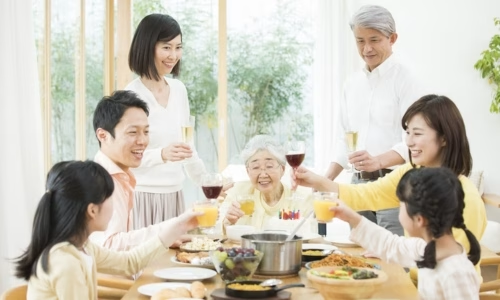
Shūbun no Hi (Sept 23): Honors autumn’s arrival and ancestors.
Falling around September 23, Shūbun no Hi marks the point when day and night are nearly equal in length. This holiday not only signals the seasonal shift into autumn but also serves as a spiritual time for honoring ancestors and appreciating natural harmony.
Similar to the Vernal Equinox in spring, this day is part of the Higan period, during which many people return to their hometowns, visit family graves, and make offerings. It’s a calm, respectful time rooted in Buddhist tradition and the idea of reconnecting with loved ones who have passed.
Beyond religious customs, Shūbun no Hi is also a moment to enjoy the changing foliage, cooler weather, and the serenity that comes with early autumn.
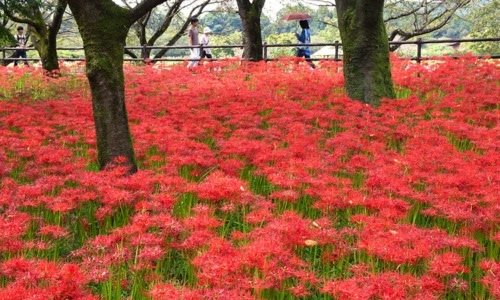
October
Sports Day, known in Japanese as Supōtsu no Hi, is observed on the second Monday of October. This national holiday was originally established to commemorate the opening of the 1964 Tokyo Olympics and now serves to promote physical activity and community involvement through sports.
Across the country, schools, neighborhoods, and various organizations host “undōkai” (sports festivals), featuring fun and energetic competitions like relay races, tug-of-war, obstacle courses, and other group activities. These events offer a great opportunity for students, teachers, and parents to come together and encourage teamwork and healthy living.
Beyond schools, local parks and community centers also hold public fitness events, allowing people of all ages to participate in outdoor exercise and games. Sports Day plays an important role in inspiring an active lifestyle, strengthening community bonds, and celebrating the joy of movement in everyday life.
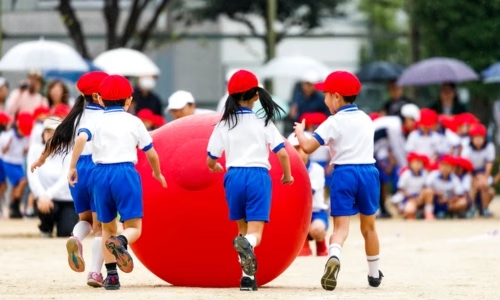
November
As the year begins to wind down, Japan celebrates two meaningful national holidays in November. These holidays focus on appreciating cultural achievements and the importance of hard work in society.
Bunka no Hi (Nov 3): Celebrates culture, arts, and academic achievements.
Held annually on November 3, Culture Day promotes the arts, academic excellence, and Japan’s rich cultural heritage. Across the country, schools, museums, and communities host events like exhibitions, parades, and award ceremonies. It’s a time to reflect on creativity, learning, and the contributions of artists and scholars.
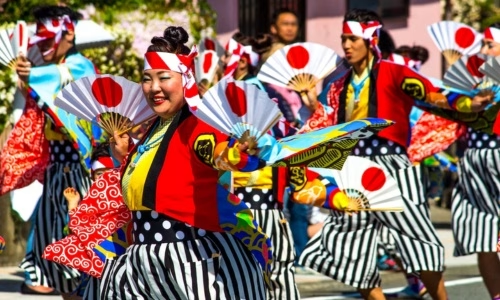
Kinrō Kansha no Hi (Nov 23): A day to honor workers and express gratitude for their contributions.
This public holiday is dedicated to recognizing the value of work and showing appreciation to workers in all fields. Originally rooted in ancient harvest rituals, it has evolved into a modern celebration of labor rights and economic growth. Many people spend the day resting, thanking colleagues or family members, and reflecting on their role in society.
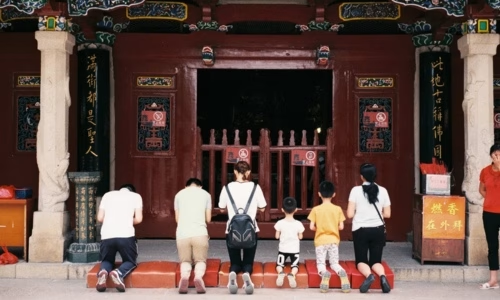
The Meaning Behind Japan’s Public Holidays
Each public holiday in Japan has a unique origin and purpose, deeply rooted in the country’s history, values, and cultural traditions. While some commemorate significant national milestones, others celebrate nature, family, or societal ideals. These holidays are more than just days off, they are opportunities for reflection, gratitude, and cultural appreciation.
For instance:
- Coming of Age Day (成人の日 – Seijin no Hi), held on the second Monday of January, celebrates young people who have reached the age of 20. It marks their official transition into adulthood, with local governments across Japan hosting ceremonies to honor new adults and encourage their contributions to society.
- Greenery Day (みどりの日 – Midori no Hi), observed on May 4, honors the late Emperor Shōwa’s deep appreciation for nature. It encourages people to connect with the environment, often through outdoor activities, park visits, and tree-planting events.
- Labor Thanksgiving Day (勤労感謝の日 – Kinrō Kansha no Hi), celebrated on November 23, originated from ancient harvest festivals but has become a modern tribute to workers and productivity. On this day, schoolchildren often make thank-you cards for public servants, and many families take time to appreciate one another’s efforts.
- Respect for the Aged Day (敬老の日 – Keirō no Hi), held on the third Monday of September, recognizes the contributions of elderly citizens. Families often visit grandparents, while communities host events to honor local seniors.
- Children’s Day (こどもの日 – Kodomo no Hi), part of Golden Week on May 5, is dedicated to celebrating children’s happiness and growth. Homes display carp streamers (koinobori), symbolizing strength and perseverance, and children are encouraged to value their heritage.
In essence, Japanese public holidays reflect the nation’s collective spirit, blending reverence for tradition with respect for individuals, society, and the natural world. They serve not only as rest days but also as powerful reminders of what matters most.
What Happens During Japanese Holidays?
When a holiday approaches in Japan, the atmosphere noticeably shifts. Streets become livelier, train stations buzz with travelers, and the nation’s rhythm slows as people take time off. Banks, schools, and government offices typically close, and public transport, especially highways and trains, can become crowded, particularly during extended breaks like Golden Week, Obon, or the New Year holidays.
Here’s what typically happens during these holidays:
- Festivals and Parades: Many holidays are celebrated with vibrant matsuri (festivals), featuring colorful processions, traditional dance and music performances, food stalls, and fireworks. For example, Children’s Day and Tanabata are often marked by community parades and beautifully decorated streets.
- Family Gatherings: Holidays like Obon and New Year’s (Shōgatsu) are times for families to reunite. Many people travel back to their hometowns to honor ancestors, share meals, and spend time with relatives. It’s one of the few times in the year when three generations often come together under one roof.
- Cultural and Religious Ceremonies: Local shrines, temples, and public spaces may host special rituals or events. On Coming of Age Day, young adults wear traditional attire and participate in ceremonies organized by municipal offices. During Shichi-Go-San in November, families visit shrines with children dressed in kimono to pray for health and growth.
For tourists, national holidays offer a unique chance to experience authentic local traditions,from tasting seasonal festival food to witnessing centuries-old rituals. However, due to the increase in domestic travel and closed services, it’s wise to book accommodations and transportation early, especially around major holiday periods.
Daily Routines During National Holidays
Public holidays in Japan influence more than just personal schedules, they have a noticeable impact on many aspects of daily life and infrastructure.
Here are some common effects:
- Workplaces and Offices: Many businesses, especially government offices and banks, close for the day or operate on limited hours. Even private companies often reduce workloads during major holiday periods.
- Public Transportation: Trains, buses, and airports experience a surge in passengers, particularly during Golden Week, Obon, and New Year. Expect longer lines, higher fares on some routes, and crowded platforms in major cities.
- Shops and Tourist Attractions: While many retail stores and tourist spots stay open, they may adjust their hours. Some offer special sales, themed events, or holiday-only items, especially during festive periods like Children’s Day or Tanabata.
- School Calendars: Japanese schools are structured around national holidays, with extended breaks during spring, summer, and winter. Special ceremonies, such as graduation or entrance ceremonies, are often held just before or after these breaks.
Because of these changes, advance planning is essential, especially if your trip overlaps with peak travel periods. Booking trains, flights, and accommodations well in advance can help you avoid last-minute stress.
Common Japanese Words and Phrases for Holidays
When spending time in Japan during a public holiday or festival, you may come across some common expressions that reflect the country’s rich cultural traditions. Learning a few of these can help you connect more easily with locals and enhance your overall experience.
Useful vocabulary for the occasion:
- Shukujitsu (祝日) – Official public holiday in Japan.
- Kyūjitsu (休日) – A regular day of rest or break.
- 祭り (Matsuri) – Festival
- おめでとうございます (Omedetō gozaimasu) – A formal way to say “Congrats” often used for weddings or Coming of Age Day.
- 良い休みを (Yoi yasumi o) – Enjoy your holiday!
A casual and friendly phrase to wish someone a pleasant break.
Understanding and using these phrases, even just a few, can make your interactions feel more natural and respectful during Japan’s festive times.
Tips for Enjoying Japanese Holidays Like a Local
If you’re in Japan during a public holiday, don’t just treat it as a day off, embrace the moment! National holidays are excellent opportunities to experience Japan’s culture firsthand. Try these tips to enjoy them fully:
- Visit a local festival (祭り – Matsuri): From summer fireworks displays to spring cherry blossom viewings, festivals are vibrant, family-friendly, and full of energy.
- Try traditional foods: Many holidays feature special seasonal treats, like mochi (rice cakes) for New Year or sakura-themed snacks in spring.
- Join public celebrations: Cities and towns often host parades, markets, or performances that are open to everyone, including tourists.
- Respect local customs: When visiting shrines or attending cultural events, take a moment to learn proper etiquette, such as bowing, cleansing rituals, or dress codes.
Even as a visitor, participating in these traditions can help you connect more deeply with Japan’s history, values, and everyday life.
Conclusion
National holidays in Japan are more than just marked dates on a calendar, they are windows into the country’s values, traditions, and way of life. Whether you’re here for a short trip or planning a long-term stay, understanding these days will enrich your experience and help you appreciate Japan’s unique rhythm.
So next time you see a “Shukujitsu” on the calendar, take a moment to explore what it represents. It might just lead you to your next unforgettable memory in Japan.

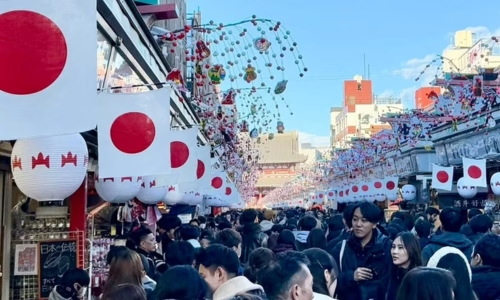




Leave a Reply